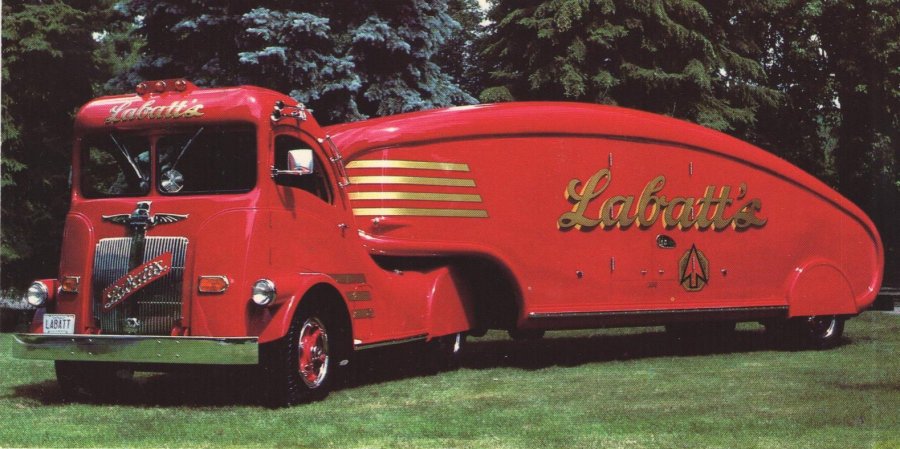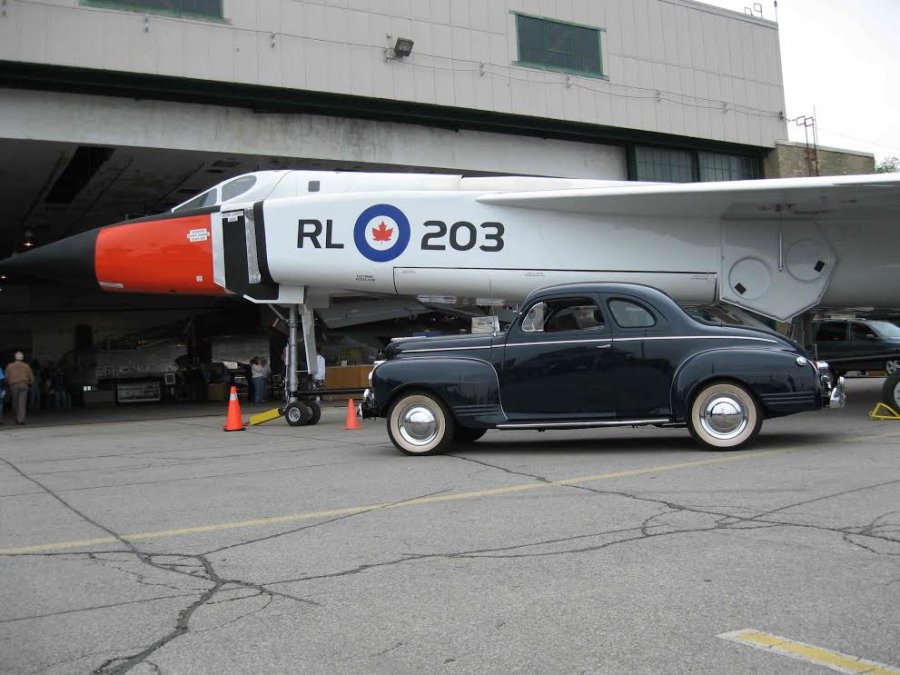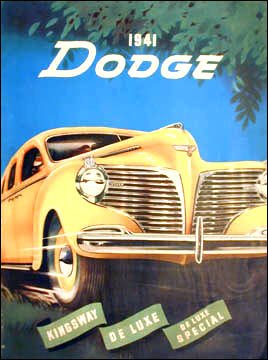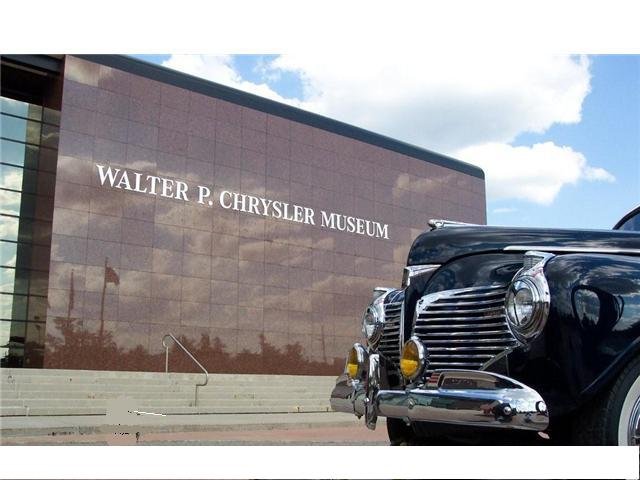-
Posts
562 -
Joined
-
Last visited
-
Days Won
1
Content Type
Links Directory
Profiles
Articles
Forums
Downloads
Store
Gallery
Blogs
Events
Everything posted by Roadkingcoupe
-
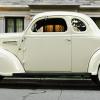
Original Dodge Dealer Poster
Roadkingcoupe replied to Roadkingcoupe's topic in Mopar Flathead Truck Forum
I posted three more 1930's Dealer Posters on the P15D24 forum if anyone is interested in seeing some more. -

Original 1930's Dodge & Plymouth Dealer posters
Roadkingcoupe replied to Roadkingcoupe's topic in P15-D24 Forum
-
Just wanted to share these Original 1930's Dodge & Plymouth Dealer posters that I have had squireled away for years. They measure 38" by 50" and were never actually mounted on the wall. No tape marks No tack holes. Beautiful Plymouth and Dodge artwork with bright and colorful lithography. Of course "Made in the USA"!
-
This is a ORIGINAL Dodge Dealer poster measuring 38" by 50" that I have had stored away. The quality of the lithogragh and the colors are amazing. It was never on display and has no tap marks or holes from tacks. Just wanted to share with the forum.
-
Ontario Reman (Toronto) was on Caledonia road just North of Lawrence by what I believe was owned by Fenwick Automotive or Levy Auto Parts? the motor was tagged from a rebuild by them and it was an authorized Chrysler rebuilder.
-
Art Deco Beer Delivery I have been on this truck and it is stunning. "Labatts Streamliners were a unique sight in Canada from 1932 to 1955. The tractor chassis was produced by White Motor Company and the trailer chassis by Freuhauf. Designed by Count Alexis De Sakhnoffsky, the bodies were crafted by Smith Bros. Body Works in Toronto. Joe Scott together with his brother Bob of London Ontario took up the arduous task of restoring this famous streamliner for the Labatt Brewing Company and their skill along with 7 years of dedication to the minute detail have seen this beautiful legend return to mint condition."
-
Thoughts on the 1937 -1939 Chrysler cars.... The 1937 Plymouth was advertised as the "ALL STEEL" car. This referred to the fact that they were stamping the roofs in solid sheet metal and getting rid of the rectangular vinyl insert that was found on 1936 and prior cars. If you take a good look at the 1939 Plymouth the only "flat" exterior body panels were the two vertical drop boards that go between the hood halves and the front fenders. Every other inch of the car has some king of curved or compound curved surface. As a result the 1939 Plymouth Coupes were considered "bulbous" with huge curved fenders, roof line and trunk lid. It seems the technical ability to stamp / press large panels of metal into extremely curvaceous body panels reached a crescendo with the 1939 Plymouth Coupe (and sedans to a lesser extent). As a result some people find the 39's overdone. They look almost cartoon like...and I love it. The 1940 and on redesign saw the bodies widen and the fenders shrink. The 1941 Plymouth might be one of the most balanced designs of the decade and is a poor mans classic. The point is that prior to 1940 the cars peaked in their curvaceous styling and "roundness", maybe a love it or leave it for some folks but none the less a beautiful exercise in design and technical abilities to produce an almost exaggerated larger then life statement. Over 30 years of ownership the 1939 Plymouth Coupe has had many small children literally run from their parents towards the car like it was a "cartoon" car in larger then life scale. Let me know what you think. Pictured below.......
-
Actually have helped other fellow enthusiasts mostly.
-
It has been a practice for the last 30 years to carry a box in the trunk of useful items for Breakdowns and Spares. Just curious what else people carry for safety and spares concerns? Suggestions? Found in the trunk of my car.... FIRE extinguisher, wheel chock, tow rope, rags & hand cleaner, small tool kit. Spares: tubes, V-belt, ignition parts, Oil, Brake Fluid, lug nut wrench, bumper jack (yes it is unsafe...wheel chock), jug of anti freeze or water, AAA card, battery operated radio.
-
This is a common problem on many public internet forums. It is not limited to auto related sites either. There seems to be an ebb and flow to this phenomenon and it is worthwhile to understand. As a site grows it seems to develop different "flavors" of participants. They include the "frequent flyers" the vocal (high post counts) and exclusively readers as well. There are members who read or post for entertainment and those who want to share info, stories and or resolve a specific issue. There are members who really enjoy the site but never post (nothing wrong with that either). Possibly more people read then ever post on the site. What's troubling is the % of members who read or visit and rarely post. Nothing wrong with it BUT they are the silent majority (not a political reference). As a result the tone and tenor of the high participant vocal members set the tone for the whole forum. By nature the quiet majority are rarely heard and that skews the optics about the "personality" of the site. I really think that there is room for everyone. Some of the "vocal" posters are very knowledgeable and I would miss their "wisdom". I sincerely encourage a community that is welcoming to all members as the 1930's 1940's 1950's MoPaR interest could easily die off due to demographics. We need to encourage younger members and make it a welcoming site for all. Restorers and hot rodders have generally tolerated each other on this site much better then elsewhere. The growth of this site and the relatively dwindling participation in the Plymouth Owners Club is a good example. There is room for everyone, I hope it can remain inclusive. The more the moderators need to ref the site the more restrictive the site might become. That would be a loss.
-

1938 Dodge D10 (Canadian) New Addition
Roadkingcoupe replied to 1949 Wraith's topic in P15-D24 Forum
The rather crude name for a Plymouth bodied Canadian Dodge is a "PLODGE". Here is a 1941 Canadian D20 Plymouth bodied Dodge D20 -
1938 Canadian Dodge D10 tail lamp base part # 667025 right side (passenger side) # 667026 left side (driver side) For more info PM directly..
-
Source "PLYMOUTH BULLETIN" "Product of Chrysler engineering and craftsmanship, Plymouth has been so named because its endurance and strength, ruggedness and freedom from limitations so accurately typify that Pilgrim band who were the first American Colonists." That was the official line. It sounded quite logical. The name came from the Plymouth colony of the Pilgrims who journeyed to North America on the good ship Mayflower. And the official line was backed up with pilgrim garb supplied to each dealer with which to dress up some willing (?) employee to lead a Plymouth Parade introducing this new low-priced car for the young Chrysler Corporation. It was not entirely new, this "new" low-priced car. When Walter P. Chrysler took over the bankrupt Maxwell company in 1923, he finally had the foundation to bring out the car of his dreams; one bearing his own name. However it was soon apparent that the Maxwell name, corrupted by a series of poorly built cars that had brought the company to bankruptcy, was an irretrievable liability. Therefore in 1926, he put a Chrysler radiator on the Maxwell and rechristened it the Chrysler 58 (its supposed top speed). Yet this move was but a holding action. Already in 1926 Walter Chrysler was planning a full-fledged entry into the low-priced field dominated by Ford and Chevrolet. Indeed, Henry Ford had warned Chrysler, "You'll go broke! Chevrolet and I have the market all sewed up!" But WPC wasn't one to fear to such warnings. In fact he was more likely spurred on by them to prove such warnings wrong. And Ford's rapidly declining Model T sales seemed to indicate that the giant was vulnerable and that the warning could indeed be proven wrong. To take full advantage of this vulnerability, Chrysler needed the "perfect car with the perfect name." That name was to be "Plymouth." Named after Plymouth Rock, that great American symbol, right? Well, not quite. Behind the "official line" is a story that surfaced years later. It is about what really happened behind those closed boardroom doors. "What we want," Chrysler had said, "is a popular name, something people will recognize instantly." In that room was Joe Frazer, later to become president of Graham Motors and still later to join Henry Kaiser in a post-war automotive venture. "Well, boss," replied Frazer, "why not call it Plymouth? That's a good old American name." The other assembled executives looked askance the notion of their car bearing such a puritanical sounding * name. Yet against his colleagues' misgivings, Joe Frazer persisted. "Ever hear of Plymouth Binder Twine?" he asked. " Well," boomed out Chrysler, "every goddam farmer in America's heard of that!" The hidden appeal wasn't wasted on this one-time Kansas farm boy. Every farmer had to have a car, and most of them at the time were driving Fords. Now here was an opening to the giant's vulnerability. "Every farmer uses Plymouth Binder Twine," he said, "let's give them a name they're familiar with!" And so the name was Plymouth. The Mayflower ship on its radiator suggested the rock and the Pilgrims, but if it wasn't for the binder twine, there would never have been a car named Plymouth. On January 11, 1928 the first Plymouth was produced. As it turned out, this was the best of times for introducing a low-priced car. Ford was just beginning Model A production after nearly a year's shutdown. Chevrolet's six was yet a year away. Hudson's Essex was in decline. Willys' Whippet was selling like hotcakes, but it had already peaked. And, most importantly, the stock market crash of 1929 was yet a year away. The new Plymouth sold well, reaching Number 15 in production its first (half) year. By 1931 it had already reached the Number Three position, which it would hold until 1954. In 1932, while Chevrolet and Ford sales were dropping drastically from pre-depression highs, Plymouth was the only car to gain in sales over 1931. In fact, all through the Great Depression Plymouth continued to gain in sales, a remarkable feat considering the times. Henry Ford, as it turned out, was almost right. He had left out one word in his warning to Chrysler. He should have said, "if you don't build a Plymouth, you'll go broke."
-
Bill...thanks for the factual input and excellent information. Always a pleasure to read your posts. Andydodge....the pot metal vs. presses metal (over a steel armeture) headlamp bezels (doors) were also available in both variations on the 1941 Plymouth's in the US as well. They were OEM Mopar and have separate part numbers as listed in dealer parts books.
-
Variations on a theme... The first photo is of a USA built 1939 Plymouth Stainless Steel Upper grill molding beside it is a CAST pot metal molding of the same part for the Canadian built 1939 Plymouth. Second photo is the variation of a Canadian 1941 Plymouth and a USA built 1941 Plymouth Grill molding. BOTH for 1941 Plymouths but the CDN variation has a "rib" in the profile. The third photo is a 1939 Canadian built Plymouth bodied Dodge or "PLODGE"
-
In addition to the grill, the parking light frames were pot metal on the D25 (part # 1161175 right / #1161176 left) and Stamped Stainless Steel on the D24 (part #1148784 right / # 1148785 left). Part numbers: D25 Canadian pot metal Grill Left #1149210 Right #1149211 (pot metal two part grill) USA built had a stainless steel one part grills.
-
You are correct generalizations are vague. Specifically... The 1939 Canadian Plymouth`s have pot metal moldings. the USA built 1939 Plymouth`s have stainless steel. Pictures available if necessary. The 1942 1946 1947 1948 Canadian Dodges have pot metal grills the USA built have stainless steel grills. The 1946 -1948 Desoto S11 models have a pot metal grill. They were often used for taxis. As a result they often were in accidents. I have had a DeSoto S11 grill made out of cast aluminum. It was NORS aftermarket replacement and was a rough estimation of the original. I would generalize that the grill you have is a similar NORS aftermarket
-
Also known as a "PLODGE" Plymouth bodied Dodge badged Canadian conversions were often called Plodges (slang). What I find interesting is that the Dodge grills for the Plymouth bodied Plodges looked like their American cousins BUT were a completely different animal. Although the grills look the same they had to match the contour of the Plymouth front end and therefore they will not fit the US Dodge (not even close) . (Most) Canadian Plodges had pot metal moldings instead of the stainless steel found on the US vehicles. They look the same but the construction was different.
-
Temecula Valley Mopar looks like a reseller of made today "OE look" parts (whatever that means). There are a number of vendors using Bernbaums catalogue with their name on it selling the same parts as provided from Bernbaum. In addition there are a number of "Drop ship" sellers who never actually see, hold or touch the part. They simply take an order and have it shipped directly from the supplier. Not sure why someone would order form a drop shipper retailer when a little google searching always finds the source.
-
ANCO "RainMaster" book shows adjustable 6"-9" wiper arm and a 10" blade. The NOS MoPaR wiper arms were trico repackaged in MoPaR boxes. The style of attachment for the wiper blade and wiper arm (to car) is also important to keep in mind.
-
S8 is the correct code for the 1941 DeSoto and the serial number should have some more numerals. There might be a five point star between the model # (S8) and the actual engine serial number.
-
Just a thought.... Pouring some fuel directly into the carb for startups after long lay ups is highly suggested. In my car it takes a long time for fuel to pump from the tank to the motor. Maybe the diaphragm in the fuel pump is weak or the fuel lines are full of air BUT cranking the motor over and over, is tough on the battery & starter. A little fuel in the carb helps to alleviate that problem. I had a 1941 Plymouth with a backup electric fuel pump for that exact reason.
-

1941 chrysler c28 throttle return spring and bracket install
Roadkingcoupe replied to 41chysleRoyal's topic in P15-D24 Forum
possibly mounts on the head bolts. -
part # 1115781 Horn Blowing Ring Retainer Ornament part # 1121637 Horn Blowing Ring Retainer Ornament ( with special horn ring) There were two S11 models (Custom and Deluxe?) the difference isn't the color of the wheel but the trim code of the vehicle. One was a rectangular Ornament and the other was an elongated oval shape.
-
The originals are actually a complicated part to make and they are spring steel and possible hardened as well. They can be purchased cheaply from Restoration Specialties and I would stick with the originals. They flex...its part of the design and makes it easier to install and remove. just a thought......




